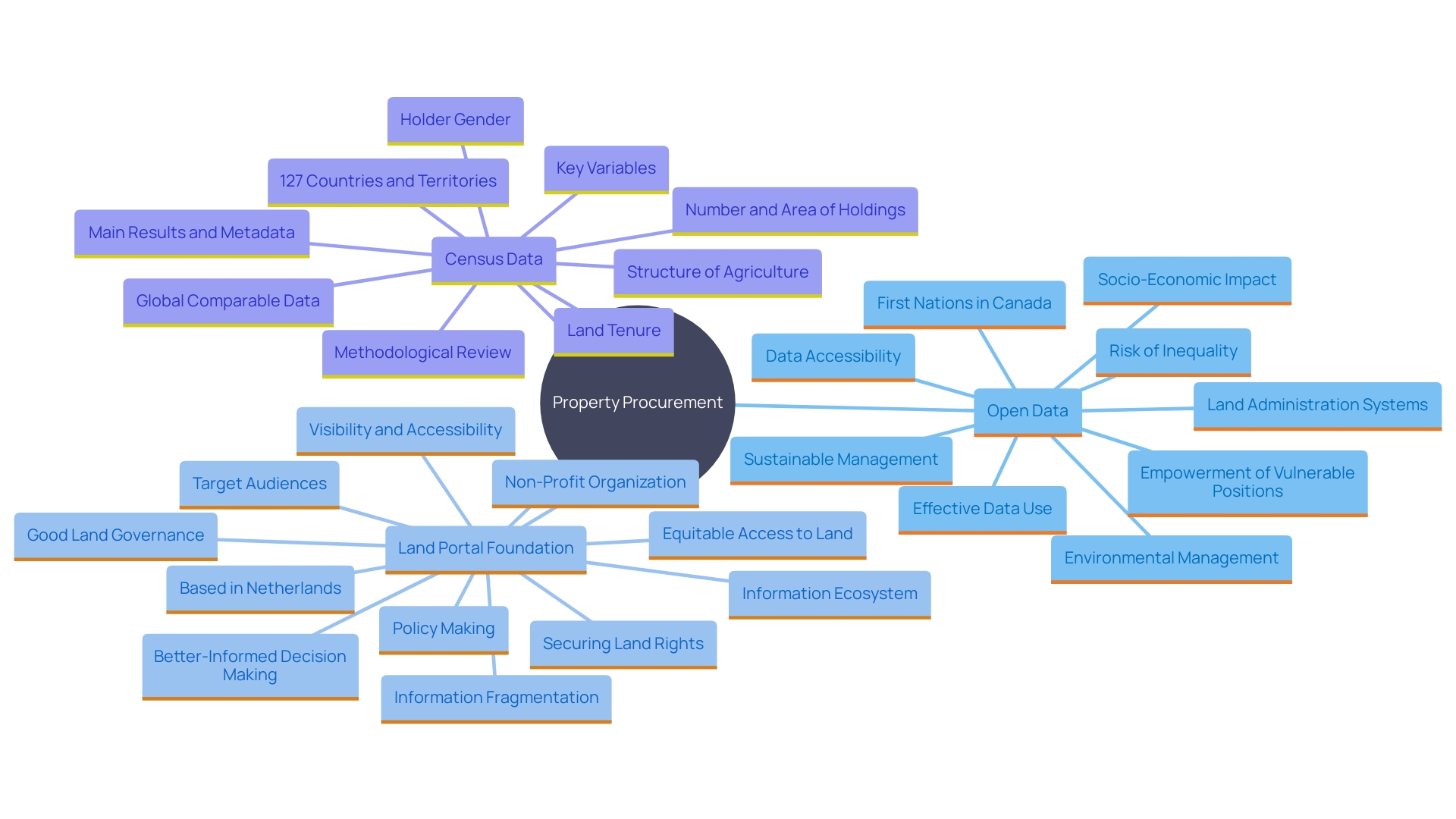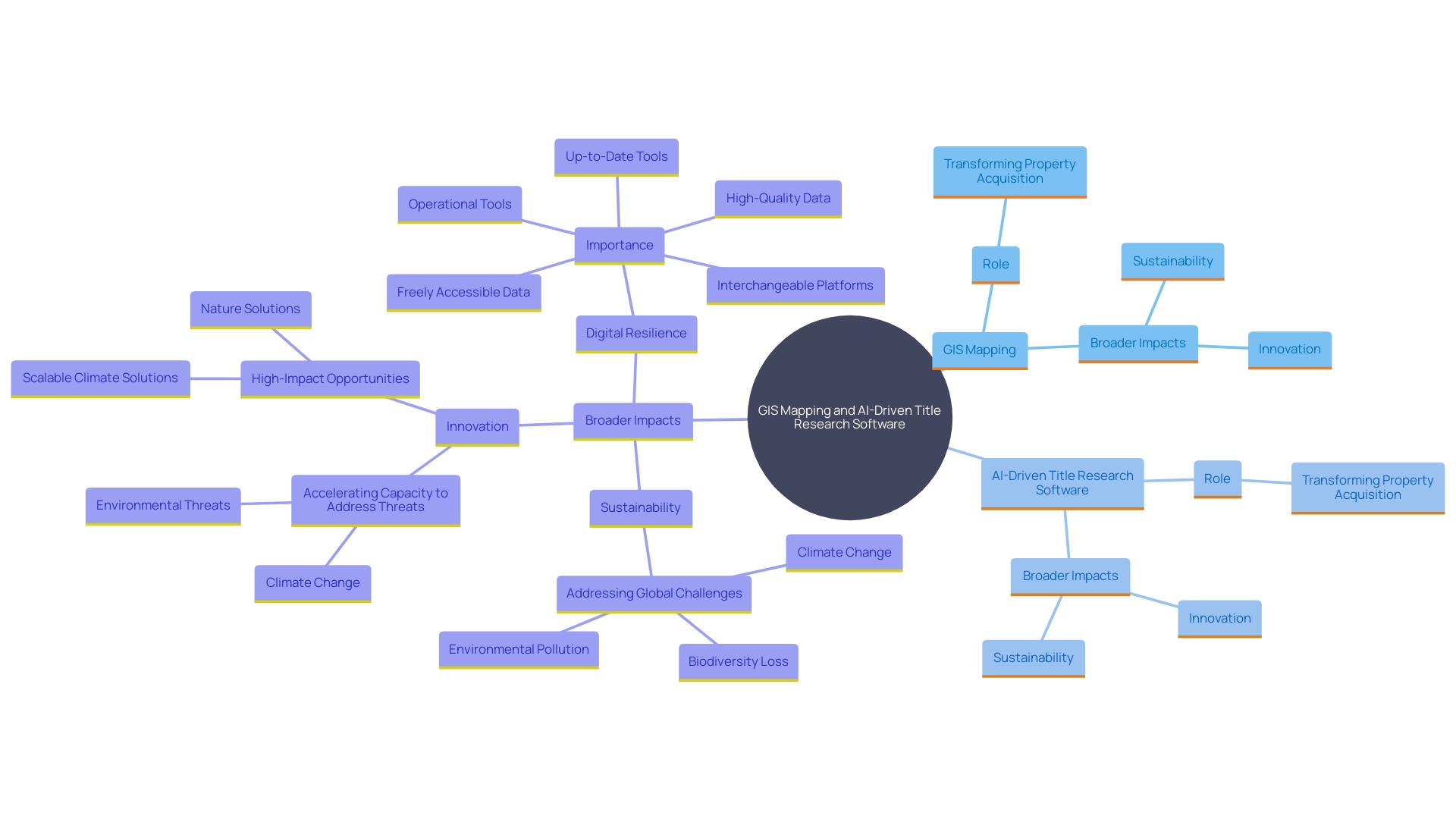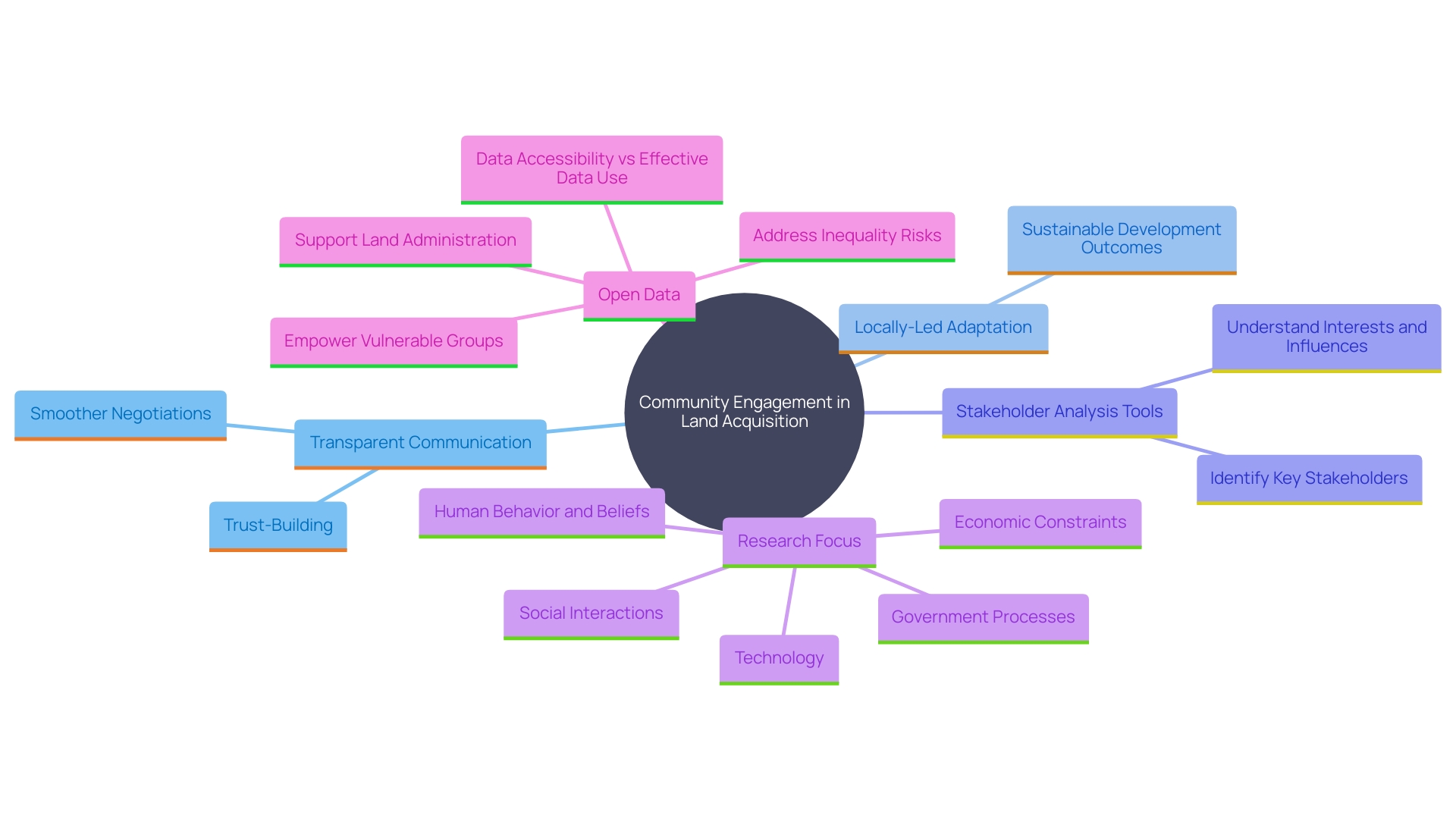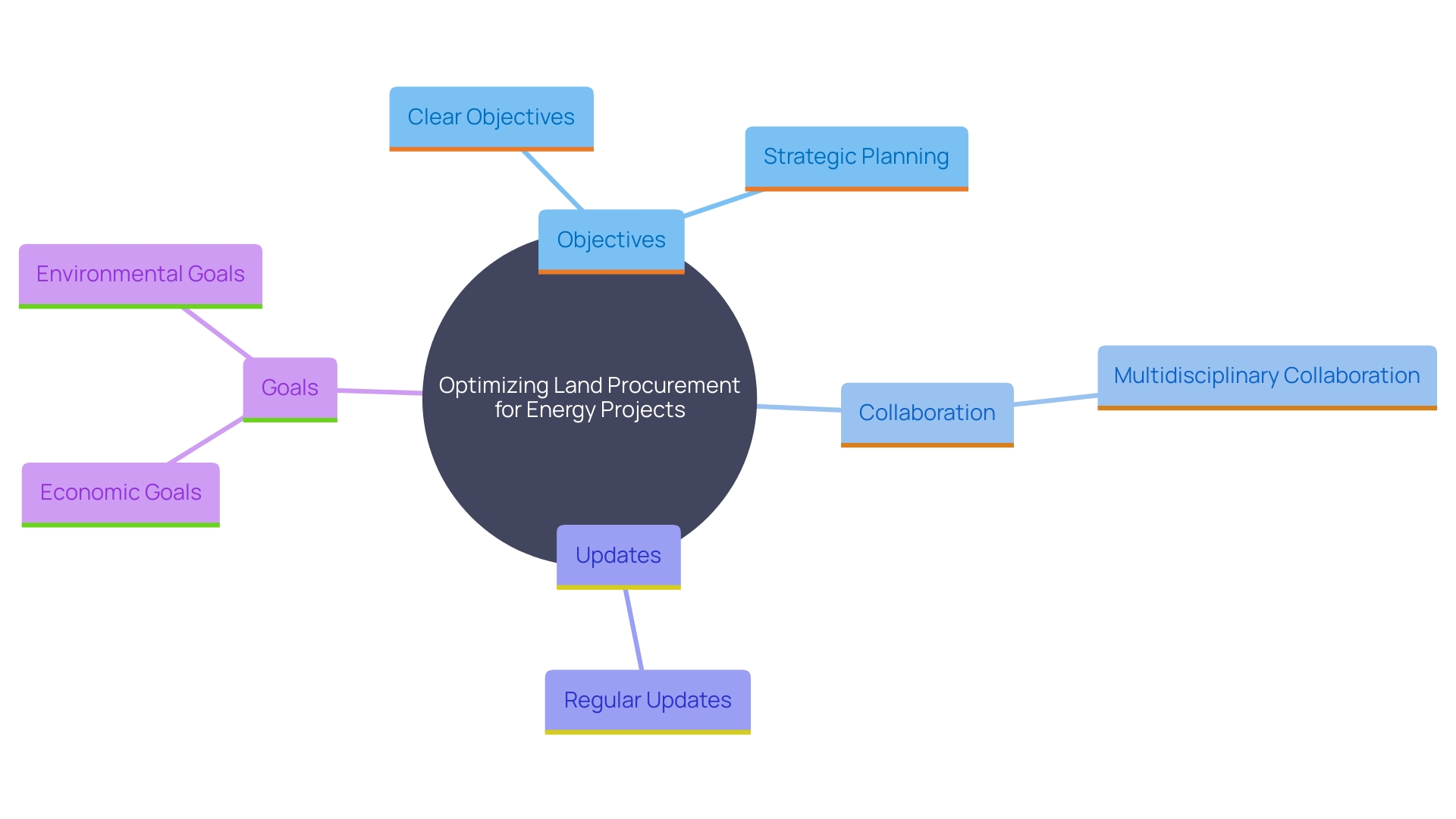Introduction
Effective land acquisition is a cornerstone of successful energy project development, requiring a thorough understanding of land tenure systems, property rights, and regulatory frameworks. The intricacies of land ownership, as illustrated by historical cases such as Bruce’s Beach, highlight the potential for legal disputes and the importance of navigating complex local customs and laws. Community engagement and benefit-sharing arrangements further underscore the need for transparent communication to foster trust and mitigate opposition.
In the realm of renewable energy, the challenges of land acquisition are compounded by legal entanglements, community resistance, and diverse regulatory requirements. The surge in renewable energy projects in the United States exemplifies these issues, where stakeholder engagement and regulatory compliance become critical to project success. The deployment of advanced technologies like GIS mapping and AI-powered tools offers transformative solutions, enhancing the efficiency and accuracy of the acquisition process.
Moreover, environmental and regulatory compliance remains a pivotal aspect, with stringent laws like NEPA and CEQA necessitating thorough environmental assessments and strategic planning. Incorporating best practices, such as establishing clear objectives, multidisciplinary collaboration, and regular updates, can significantly optimize land acquisition processes. These practices ensure that energy projects not only meet economic objectives but also contribute to sustainable development and environmental stewardship.
Understanding Land Tenure and Property Rights
Efficient property procurement starts with a thorough comprehension of territory tenure frameworks and ownership rights. In many regions, property ownership may be fragmented or complex, involving various forms of tenure, such as private, communal, and state-owned properties. 'Recognizing the legitimate proprietors and stakeholders is essential, as this can greatly impact the procurement process.'. For instance, the case of Bruce’s Beach in California illustrates the complexities that can arise when local authorities seize property. Willa and Charles Bruce, who built a resort for Black Americans in the early 20th century, lost their property to eminent domain despite their legal ownership, demonstrating the potential for disputes and the importance of navigating legal frameworks effectively.
Familiarity with regional traditions, legal frameworks, and guidelines related to property rights is crucial to manage possible conflicts and facilitate a more seamless procurement process. This is particularly important in regions where agrarian reform is underway, such as the joint initiative by the UN Food and Agriculture Organization and the governments of Colombia and Brazil. These reforms frequently include various stakeholders, such as social movements, which can introduce layers of complexity to property procurement efforts.
Moreover, the design of legal frameworks, like the A and C Act, which provides procedural and jurisdictional grounds to set aside arbitral awards, highlights the importance of understanding local legislation. Such knowledge can help mitigate risks and facilitate smoother negotiations. As noted by experts in the field, governments often face disadvantages in negotiating contracts for resource-rich territories due to asymmetrical information and lack of preparedness. Therefore, gaining comprehensive legal and regulatory understanding is essential for successful property procurement.

Challenges in Land Acquisition for Energy Projects
Obtaining terrain for energy initiatives involves maneuvering through numerous challenges, such as legal complications, community opposition, and regulatory complexities. Legal disputes often arise due to conflicting land claims or insufficient documentation, complicating the acquisition process. Community opposition frequently stems from concerns regarding environmental impacts or the perceived lack of direct benefits to local residents. Moreover, regulatory requirements differ significantly across jurisdictions, which can hinder compliance and prolong timelines.
The United States has experienced significant growth in renewable energy initiatives, particularly in wind and solar. This surge has escalated the demand for transmission lines to incorporate these initiatives into the power grid. However, this expansion has also led to various clashes between private landowners and developers, as noted by Meghan Dawson McElvy of Bradley Arant Boult Cummings. Addressing such disputes early in the project lifecycle is crucial. For instance, Ohio law mandates the Ohio Power Siting Board (OPSB) to evaluate eight specific criteria before approving major utility facilities, ensuring that environmental and community impacts are minimized.
Strategies to mitigate these challenges include thorough stakeholder engagement and transparent communication. Developing trust and building consensus with community members can help address opposition more effectively. As policymakers continue to allocate substantial resources toward transitioning from fossil fuels to renewable sources, understanding and addressing local opposition is vital to avoid delays or blockages in the decarbonization efforts.
In addition, resources like the Energy Communities IWG's Getting Started Guide provide valuable tools for communities and developers to navigate the economic and social changes resulting from the energy transition. By utilizing such assets and participating in proactive planning, teams can better handle the intricacies of property procurement, ensuring smoother execution and adherence to regulatory standards.
Technological Solutions for Efficient Land Acquisition
'Emerging technologies, such as GIS mapping and AI-driven title research software, are transforming the acquisition process.'. GIS mapping offers an advanced depiction of property boundaries, ownership, and potential conflicts, allowing project managers to make informed decisions based on data. AI-driven instruments speed up title investigation, guaranteeing accuracy and greatly minimizing the time needed to determine property ownership.
The transformative potential of these technologies cannot be overstated. For instance, a Landscape Assessment report by Columbia University and Esri highlights the high-impact opportunities for AI to drive innovation in scalable climate and nature solutions. Ai's role in geospatial intelligence and Big Data analytics is becoming increasingly crucial across all industries, offering greater insights to inform important decisions. As Bayanat's transition from a mapping company to an AI-powered geospatial analytics firm demonstrates, the pace of innovation in this field is remarkable. Their solutions now provide predictive capabilities unimaginable a few years ago, underscoring the rapid advancements in geospatial data and technological applications.
Furthermore, the incorporation of these technologies in property procurement is part of a wider movement of utilizing AI to tackle worldwide issues. AI has already accelerated innovations across various domains, from drug discovery to environmental management. It is poised to dramatically enhance our capacity to tackle climate change and environmental threats, as evidenced by ongoing collaborations between academic institutions and technology firms.
Integrating these advancements not only boosts the efficiency of property procurement processes but also enhances their overall effectiveness. By providing managers with advanced tools and data, we can ensure more precise and timely decision-making, ultimately contributing to sustainable development and better stewardship of our natural resources.

Community Engagement and Benefit-Sharing Arrangements
Engaging with local communities is fundamental to successful land acquisition. Establishing transparent communication channels fosters trust and helps address community concerns, ensuring smoother negotiations and mitigating opposition. For instance, locally-led adaptation (LLA) emphasizes the leadership and decision-making authority of local communities, recognizing their unique insights into their needs and challenges. This approach is reflected in benefit-sharing agreements, where development initiatives include local advantages such as job creation and infrastructure enhancements. By incorporating community feedback and emphasizing local advantages, initiatives can attain more sustainable and beneficial results. According to recent data, tools like the S.A.M (Stakeholder Analysis and Mapping) enhance decision-making by providing visualizations of local stakeholder relationships and power dynamics, further supporting effective community engagement.

Environmental and Regulatory Compliance
Following environmental regulations and compliance requirements is vital in property acquisition for power projects. The National Environmental Policy Act (NEPA) and state versions, such as CEQA, often impose significant delays and high compliance costs, emphasizing the need for thorough environmental assessments. These assessments are vital in identifying potential impacts and developing effective mitigation strategies. Understanding the legal landscape, including environmental protection laws and land use regulations, is essential for ensuring compliance and minimizing legal risks.
Technological and legal advancements are essential to tackle the power crisis and shift to renewable resources. For instance, California's goal of achieving 100% reliance on renewable resources by 2045 highlights the importance of balancing development with environmental stewardship. As power initiatives more and more include automation to enhance efficiency, the need for electricity keeps growing, requiring meticulous location choice and tactical planning.
Prominent experts like Righetti, who interact with natural resource agencies and regulatory bodies, emphasize the significance of strong standards for safeguarding frontline communities and the environment. Ensuring compliance with these standards can enhance the reputation of project developers among stakeholders, fostering trust and demonstrating a commitment to sustainable practices.
The evolving regulatory landscape presents challenges for new power sources, which often do not fit neatly within existing frameworks. For example, while geothermal power has significant potential, it faces unique regulatory hurdles that must be navigated to achieve large-scale commercial use. By prioritizing environmental care and adhering to rigorous compliance requirements, developers can successfully navigate these complexities and contribute to the global transition towards clean power.
Best Practices for Optimizing Land Acquisition Processes
Enhancing land procurement procedures for power initiatives requires a tactical and organized method, founded on distinct aims and schedules. An effective strategy begins with establishing these objectives and timelines, which guide decision-making and resource allocation throughout the project. Regular reviews and updates to these plans are essential, especially in response to evolving circumstances or stakeholder feedback, ensuring adaptability and relevance.
Collaboration among multidisciplinary teams—including legal, environmental, and community engagement experts—is vital. For instance, celebrated specialist Righetti interacts with local, regional, and national natural resource organizations and power regulators to tackle the complex issues of development. Her expertise in subsurface property law and administrative regulation exemplifies the comprehensive approach needed for successful land acquisition.
The growing demand for renewable resources, as pointed out by Dunbar, emphasizes the significance of careful site planning that balances power needs and sustainability objectives. This is particularly relevant as the real estate industry, which accounts for 40% of global combustion-related emissions, strives to meet net-zero-carbon targets by 2050.
Furthermore, findings from the World Bank's regional platform for Eastern and Southern Africa demonstrate the advantages of specialized technical assistance in speeding up clean initiatives. This initiative, backed by a USD 50 million investment, aims to fill technical knowledge gaps and enhance access to clean resources, showcasing the positive impact of targeted collaboration and strategic planning.
By integrating these elements—clear objectives, multidisciplinary collaboration, regular updates, and strategic planning—land acquisition processes can be optimized to support the successful development of energy projects, aligning with both economic and environmental goals.

Conclusion
Effective land acquisition is crucial for the success of energy projects and requires a comprehensive understanding of land tenure systems, property rights, and regulatory frameworks. Historical examples, such as Bruce’s Beach, underscore the complexities and potential legal disputes involved, emphasizing the importance of local legal knowledge.
Land acquisition faces significant challenges, including legal entanglements, community opposition, and diverse regulatory requirements. Proactive stakeholder engagement and transparent communication are essential for building trust and addressing concerns, particularly as renewable energy projects expand in the U.S.
Technological advancements, such as GIS mapping and AI-powered tools, enhance the efficiency and accuracy of the acquisition process, enabling informed decision-making that supports sustainable development.
Community engagement is vital, with benefit-sharing arrangements helping to foster local support and promote positive outcomes. Adhering to environmental regulations ensures compliance and prioritizes environmental stewardship, essential for long-term project viability.
By implementing best practices—establishing clear objectives, fostering collaboration among diverse teams, and maintaining adaptability—land acquisition processes can be optimized. As the demand for renewable energy grows, a strategic approach to land acquisition will be key to aligning economic and environmental goals, ultimately contributing to a sustainable future.




